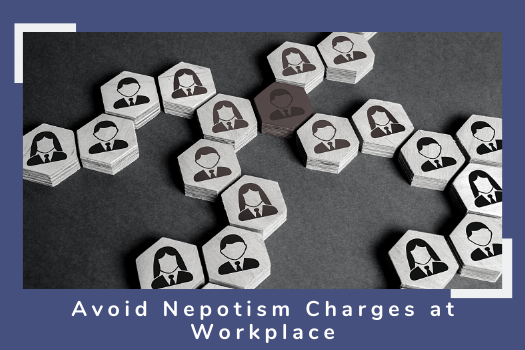Talent Shortage Reality OR A Coverup Story - Part 1
Employee Engagement, Employee Relations, Rewards and Recognition
Some of the things I enjoy being a Management Consultant are wide ranges of networking prospects, traveling across globe and opportunities to work across industries on a broad range of HR projects. In past one and a half years, I have been working with Automobile, Engineering, Financial Services, Entertainment, Information Technology, Distillery, and Beverages, and Auto Component Industries on projects such as Leadership Development, HR Automation, HR Systems Analysis, HR Processes Reengineering, Manager Development, Compensation and Benefits Analysis. In the month of November 2016, I was commissioned by the CEO of a leading player in the auto-component industry in Pune, a 215 million USD organization with 1,728 white-collar employees in three plants across India, to help them refine their manpower hiring processes with an astute focus on preparing the organization against ongoing talent shortage, which, according to them, had been affecting their expansion plans in India. At that point in time, my client had more than 65 open positions; some of which were open for over 180 days. Around the same time, Manpower Group, a leading global recruitment company, came up with its annual talent shortage survey results, announcing “40% of Global Employers Report Talent Shortages”. In this article, I will be sharing an overview of my diagnosis study with the client and the proposed project plan.
Before visiting their corporate office, for a meeting with the leadership team, including Vice President HR and AVP Talent Acquisition, I had few rounds of telephonic and offsite discussions with the CEO. To summarize his requirements regarding manpower requirement: he needed a ready pool of talented people, willing to take up challenging assignments at any given point in time, at any work site, positively motivated, working towards the requirement of clients with utmost sincerity and accountability, always meeting the threshold of On-time Delivery (OTD) and in the process of doing so add value to organizational growth and help us in creating a positive brand. To him, the educational and socio-economic background, gender, religion, physical appearance, and industry background of the candidate was irrelevant. He also said, “However, whenever I discuss a new project with my teams or asks reasons for the delay in project execution or below acceptable OTD, I am often given reasons of a shortage of manpower”. My problem diagnose meeting with leadership team, which begun at 10 AM, within one hour of its start, turned into a blame game meeting, with functional heads blaming HR for their failure to source and attract good talent from the market; HR team was blaming external forces such as talent shortage in the market, poor education system overall, impractical expectations of candidates and poor work ethics of Millennial generation. Some of the key pain areas highlighted by leadership team were as follows:
- Poor quality of resumes shared by HR and Recruitment Consultancies [Only 3-4 profiles out of 10 get shortlisted by the hiring managers]
- Below average soft skills [Communication, Language, Time Management, etc.] among candidates
- High Cost [Disproportionally high salary expectations of job candidates]
- Too long waiting time [From the date of the Offer Letter, candidates take 60-90 days to join]
A discussion with HR and Talent Acquisition Team brought forward following points –
- Frequent changes in the job description by hiring managers
- Opaque job requirements – Many times hiring managers mix 2-3 roles in one job description and make it complicated to search
- Unclear short-listing criteria are adopted by hiring managers [often candidates get rejected on the basis of their gender, marital status, age, religion, physical appearance, etc.]
- Hiring managers want us to schedule interviews on working days during working hours only, making it difficult for candidates working in different cities to participate in the recruitment process
- Few candidates turn for job interviews [While 7 out of 10 candidates come for the first round of the interview, only, 3 out of 10 candidates come for final round of interviews]
- Poor offer acceptance and joining ratios [while 6 out of 10 candidates accepts the offer letter only 5 out of 10 joins on agreed joining date]
- High first-year attrition rate [First-year attrition rate is 45%, while attrition rate among those who are working with the organization for more than TWO years is 12%]
As we came to an end of our Day-1 of discussion, I asked the AVP – Talent Acquisition to schedule a meeting with THREE of their active Recruitment Partners. 60% of manpower requirements of the organization are filled through recruitment consultancies. Next day in my meeting with recruitment consultants following points was shared –
- Hiring managers change interview schedules at the last moment without any consideration which makes it difficult to coordinate with candidates for rescheduling the interview.
- Midway through the recruitment process, the position is put on hold without any convincing response. Often, we are made to do aggressive follow-ups
- Many times, we are given a requirement, which is a mix of 2-3 roles. Not only that, most often we are asked to work within constraints of location, educational background, industrial preference and limited budget.
- Some hiring managers of the organization directly discuss their requirements with us and give us specifications which are is a contradiction with the job descriptions shared by the HR.
By the end of first round of discussion I fondly began to remember the story of an Elephant and FOUR blind men.
Once upon a time, there lived FOUR blind men in a village. One day the villagers told them, "Hey, there is an elephant in the village today”. They had no idea what an elephant was. They decided, "Even though we would not be able to see it, let us go and feel it anyway." All of them went where the elephant was. Each one of them touched the elephant.
"Hey, the elephant is a pillar," said the 1st man who touched his leg.
"No! It is like a thick branch of a tree," said the 2nd man who touched the trunk of the elephant.
"It is like a big hand fan," said the 3rd man who touched the ear of the elephant.
"It is like a huge wall," said the 4th man who touched the belly of the elephant.
They began to argue about the elephant and everyone of them insisted that he was right. A wise man was passing by. He stopped and asked them, "What is the matter?" They said, "We cannot agree to what the elephant is like." Each one of them told what he thought the elephant was like. The wise man calmly explained to them, "All of you are right. The reason each one of you is telling it differently is because each one of you touched the different part of the elephant. So, actually, the elephant has all those features what you all said."
I hope this article will be of help to you. Share your thoughts.






